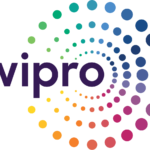Role Purpose
The purpose of this role is to perform the development of VLSI system by defining the various functionalities, architecture, layout and implementation for a client
Do
Conduct verification of the module/ IP functionality and provide customer support
Understand the architecture of the module or the IP and create verification environment and the development plan as per Universal Verification Methodology
Create test bench development and test case coding of the one or multiple module
Write the codes or check the code as required
Execute the test cases and debug the test cases if required
Conduct functional coverage analysis and document the test cases including failures and debugging procedures on SharePoint/ JIRA or any other platform as directed
Test the entire IP functionality under regression testing and complete the documentation to publish to client
Troubleshoot, debug and upgrade existing systems on time & with minimum latency and maximum efficiency
Write scripts for the IP
Comply with project plans and industry standards
Ensure reporting & documentation for the client
Ensure weekly, monthly status reports for the clients as per requirements
Maintain documents and create a repository of all design changes, recommendations etc
Maintain time-sheets for the clients
Providing written knowledge transfer/ history of the project
Stakeholder Interaction
Stakeholder Type
Stakeholder Identification
Purpose of Interaction
Internal
Tech Lead/ Architect/ Product Owner
Regular reporting & updates, testing and debugging etc.
External
Client technical team (Product Owner, Engineering Manager, Scrum Master)
Scripts of test cases, escalations etc
Display
Lists the competencies required to perform this role effectively:
Functional Competencies/ Skill
Leveraging Technology – Knowledge of current and upcoming technology along with expertise in programming (automation, tools and systems) to build efficiencies and effectiveness in own function/ Client organization – Competent
Process Excellence – Ability to follow the standards and norms to produce consistent results, provide effective control and reduction of risk – Expert
Domain knowledge – Industry knowledge as per the project requirement and industry standards of various processes – Competent
Technical Knowledge – Knowledge of System Verilog (UVM/OVM), RTL verification, languages (HDL/ HVL) – Competent to Expert
Competency Levels
Foundation
Knowledgeable about the competency requirements. Demonstrates (in parts) frequently with minimal support and guidance.
Competent
Consistently demonstrates the full range of the competency without guidance. Extends the competency to difficult and unknown situations as well.
Expert
Applies the competency in all situations and is serves as a guide to others as well.
Master
Coaches others and builds organizational capability in the competency area. Serves as a key resource for that competency and is recognised within the entire organization.
Behavioral Competencies
Process Orientation
Innovation
Managing Complexity
Client centricity
Execution Excellence
Passion for Results
Deliver
No.
Performance Parameter
Measure
1.
Verification
Timeliness
Quality of Code/ Number of defects
Customer responsiveness
Project documentation (scripts, test cases etc)
3.
Self-development
Skill test for next level clearance on Trend Nxt
VLSI Board Design
